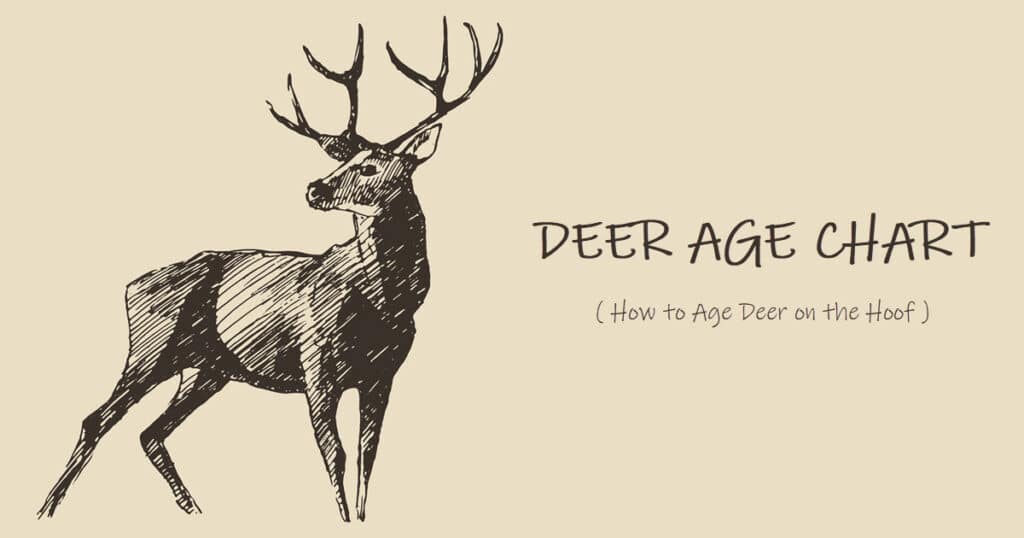Many states have regulations and laws about the age of deer that you can shoot. Beginner hunters often wonder how they can tell a deer’s age just by its appearance, while it’s still on the hoof. But you really can estimate a buck’s age by examining factors such as build and body mass, antler size, and more. Keep reading to discover our useful deer age chart, full of information on how to estimate the age of a buck on the hoof.
In this article, we’ll discuss why estimating deer age is important, as well as factors that help hunters and wildlife enthusiasts determine the age of a buck in the wild.
How a Buck’s Physical Characteristics Change With Age
Here’s an overview of the characteristics that change with age in bucks.
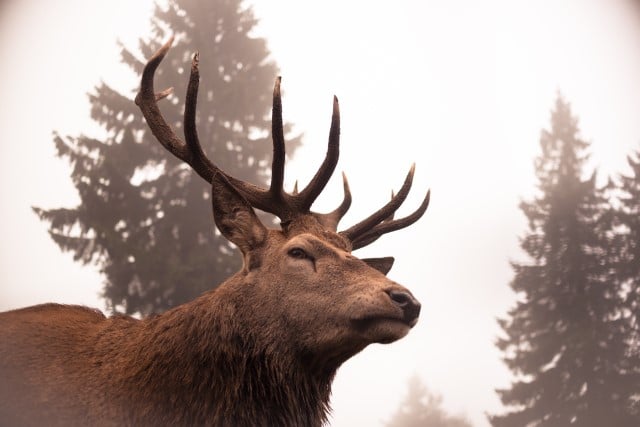
Build and Body Mass
When still a yearling, a buck will have a body size and build comparable to an adult female deer (doe). When a buck gets older, it will become noticeably larger than a female. Older bucks have a broader chest than younger ones.
Antler Size
In yearling bucks, antlers are thinner. Their breadth isn’t as great as out to the ear tips. In older bucks, the antlers exceed the space between the ear tips.
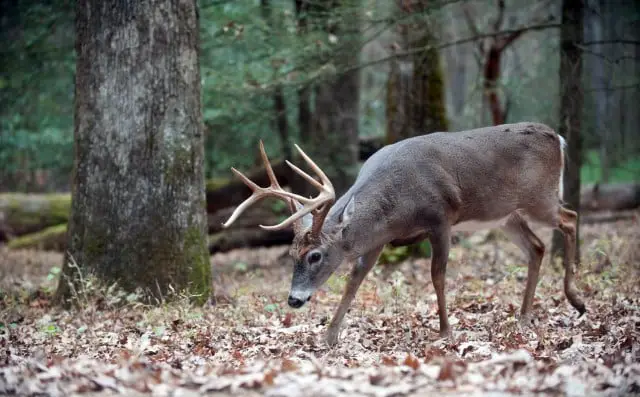
Legs
A yearling buck has long and noticeably slender legs. Later in life, its legs will have a thicker look. Also, yearlings and bucks under four years old have legs that look long in proportion to the rest of their body.
Muscles
In a young buck, the muscles often lack strong definition. In older male deer, however, the muscles, especially in the thighs and shoulders, have excellent definition.
Characteristics by Age
Many hunters like having an idea of what male deer look like at one year old, two years old, three years old, four years old, five to seven years old, and eight years old or older. Let’s take a look at helpful information on this below.
What Does a One-Year-Old Buck Look Like?
Most hunters find it quite easy to identify one-year-old male deer, which is referred to as a yearling. This animal will have a delicate appearance, especially if you compare them to older males.
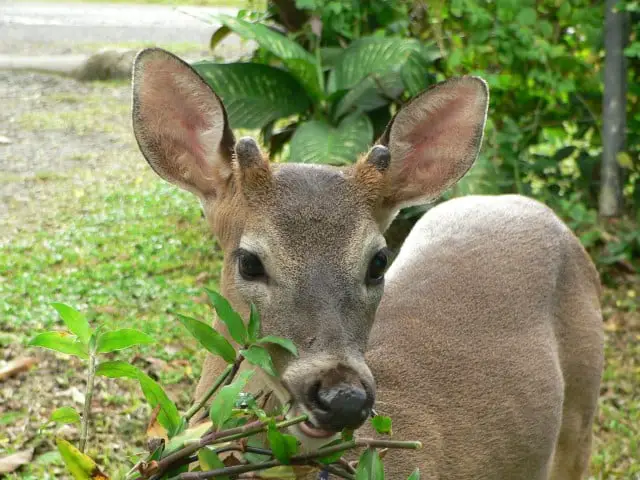
A one-year-old male deer will have a thinner neck and look a bit like a female, with the important addition of antlers. Also, the deer will have longer legs in proportion to its body than a female.
A one-year-old male deer has poor muscle definition, and the shoulders and neck are distinctly separate from each other. This deer will also have a slim waist.
One-year-old male deer are sometimes even described as looking like “does with antlers.” That is how much they look like female deer. There is quite a lot of variation in antler size when it comes to male deer of this age.
The antlers will probably have an inside spread measurement smaller than 15 inches.
What Does a Two-Year-Old Buck Look Like?
As you’ll see in our deer age chart, a two-year-old male deer will still have relatively long legs in proportion to its body. Its general appearance is usually awkward, and it will still have a noticeably slim waist.
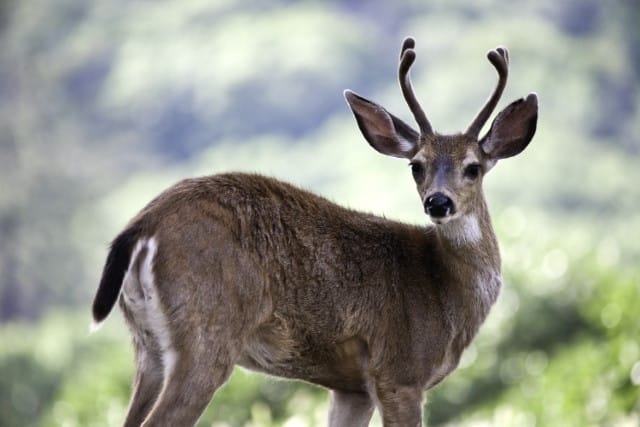
Even at two years old, a male deer still won’t have well-defined muscles in the shoulder area. However, the neck area may have some noticeable muscling, especially in the breeding season.
When a male deer is between two and two and a half years old, its body will be a bit thicker than when it was a yearling.
When it comes to antlers, a two-year-old deer may have antlers that are approximately 60 percent of its lifelong potential.
What Does a Three-Year-Old Buck Look Like?
A buck will have a well-muscled neck and shoulder area when it reaches three years old. However, there is still quite a lot of distinction between the shoulders and neck.
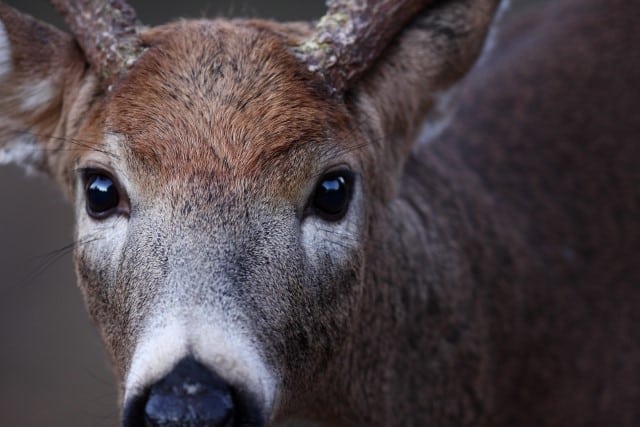
At three years old, a male deer’s chest will have a deeper look. However, the waist remains thin.
Some hunters find that male deer at this age resemble a racehorse or “thoroughbred” in this way.
When a deer is between three and three and a half years old, its antler size should be around 75 percent of its maximum potential for antler size.
What Does a Four-Year-Old Buck Look Like?
A male deer is physiologically mature when it is between four and four and a half years old.
At four years old, a male deer’s neck should be well-muscled, and it should blend much more into the shoulders and chest, which are also muscular and broad.
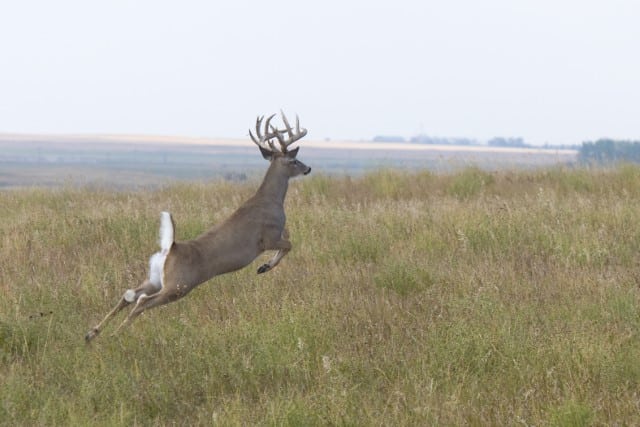
At this age, it may seem that the deer’s legs are relatively short in proportion to their body. If the deer enjoys excellent nutrition, he may have achieved as much as 90 percent of its antler growth.
If you see a four-year-old or four-and-a-half-year-old buck during the breeding season (the rut), you will see that its neck is swollen.
What Does a Five to Seven-Year-Old Buck Look Like?
When a buck is between five and seven years old, its legs will look relatively short in proportion to its body.
In addition to the well-muscled characteristics you see in a four-year-old buck, the deer will also have a sagging shape to the back and a protruding belly.
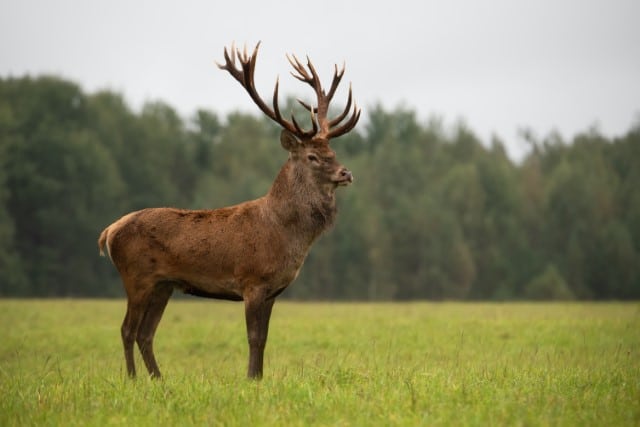
The deer has a heavier body mass than it did before, and it will have a more rounded appearance. Male deer between five and seven years old should have reached between 90 and 100 percent of their potential for antler growth.
What Does an Eight-Year-Old or Older Buck Look Like?
It’s quite unusual for a buck to reach eight years old or older. As we learn in our deer age chart, a deer of this age is no longer in its prime.
The antler and body size will be smaller than they were before. There will probably also be loose skin on the shoulder, neck, and face areas. The hip and shoulder bones may also be pointed.
Deer Age Chart to Determine the Age of a White-Tailed Buck
| Deer Age | Antlers | Muscling | Body Size / Shape | Neck | Legs |
|---|---|---|---|---|---|
| One Year Old (Yearling) | Very small antlers have clearly recently started to develop | Poor muscle definition | Similar to a full-grown female; thin waist | Thin, similar to a full-grown female; noticeable distinction between the neck and shoulder area | Legs appear long in proportion to its body |
| Two Years Old | Antlers better developed than at one year old | Some muscling in the neck area; still doesn’t have well-defined shoulder muscles | Body and posture have an awkward appearance; waist still noticeably thin | Neck still slimmer than will be; very little muscling in that area | Legs still long in proportion to the body |
| Three Years Old | Antlers bigger than what they were at two years old | The shoulder and neck areas have muscling | General body shape looks a little like a racehorse, in terms of proportions; chest looks deeper and broader ; waist still quite thin | The neck and shoulder areas are still distinctly separated | Legs still a little long in proportion to the body |
| Four Years Old (Deer Reaches Maturity) | Antlers may be as 90% as large as they will ever be (as long as the animal has enjoyed excellent nutrition) | Strong muscling in the neck and shoulders | Broad chest and well-muscled body | The buck’s neck is blending more into the shoulder and chest areas; it is thicker and better muscled | The legs look short in proportion to the body |
| Five to Seven Years Old | Antlers probably fully grown to 100% of potential | Strong and well-defined muscling | Protruding belly and sagging shape to the back; heavier body mass that creates a round look to the body | Strong and well-defined muscling | Legs are relatively short when compared to the body |
| Eight Years Old or Older (Old Age) | Antlers now smaller than they were at a younger age | This is an extremely old age for a buck, and most deer won’t reach this age; if a buck gets this old, this muscling will get less noticeable | Signs of aging in the body, face and neck, such as sagging of the face and neck skin; pointed bones in the shoulder and hip areas | Neck not as strong as it was at a younger age | General weakening |
How Does the Season Affect Body Appearance?
Keep in mind that the season in which you see a buck may affect its appearance and complicate age estimation. There are times of year when a buck’s physical appearance will change because of the rut and associated hormones.
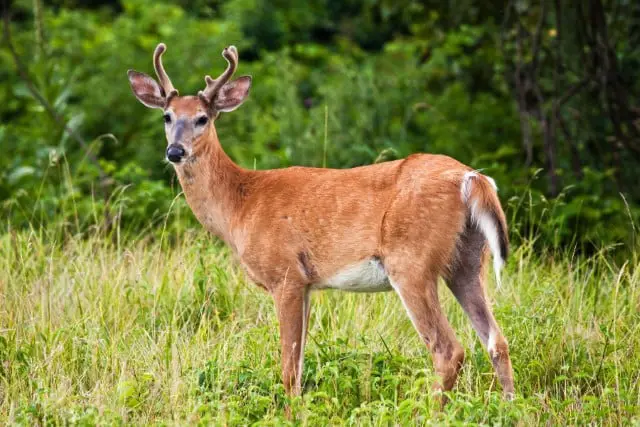
Before the rut (breeding season), bucks are usually in peak body condition.
This is because of all the foraging and eating they did with other bachelors during the spring and summer months. During this time, bucks may not have swelling the neck.
During the rut, a buck’s body condition will suffer. This is because of all the fighting for dominance and other types of activity that happens during this time.
It’s common to see wear and tear on the body, as well as broken antlers. You will see the buck has a swollen neck during this time of year.
After the rut, bucks are often quite weak compared to the peak condition they were in before that time of year. A post-rut buck will frequently look quite thin, so keep this in mind.
A mature male deer may lose as much as a full quarter of body weight during the breeding season.
Why is Estimating Deer Age Important?
The most significant reason why hunters should be able to estimate a deer’s age is the fact that there are rules about the deer you can harvest. For example, your local regulations may demand that you stick to harvesting deer within a certain age range.
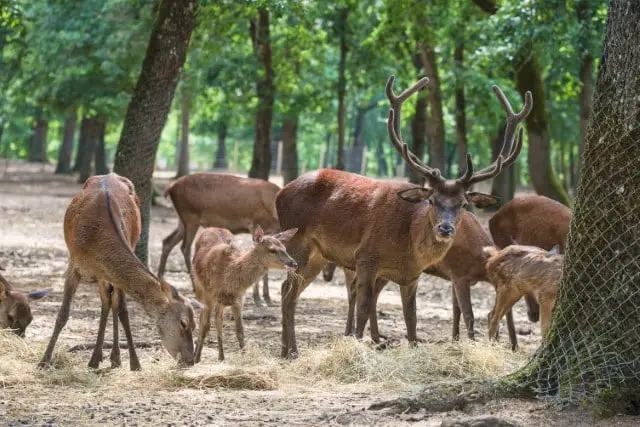
If you kill deer outside of that range, you will be breaking regulations and could end up with a hefty fine or worse.
While the size of a buck’s antlers is the most commonly used factor for estimating a deer’s age, there are other characteristics, too. For example, you can look at elements such as what specific features look like, muscle tone and definition, and body shape and size.
Being able to estimate a buck’s age will help you adhere to local regulations and create the best possible management plan for your hunting.
Final Thoughts On Our Deer Age Chart
Read our deer age chart to get acquainted with the characteristics that will help you figure out how old bucks are out in the field.
Let’s review the factors to the buck’s physical appearance that will help you come up with an age estimate:
- Antlers
- Muscling
- Body size/shape
- Neck
- Legs

